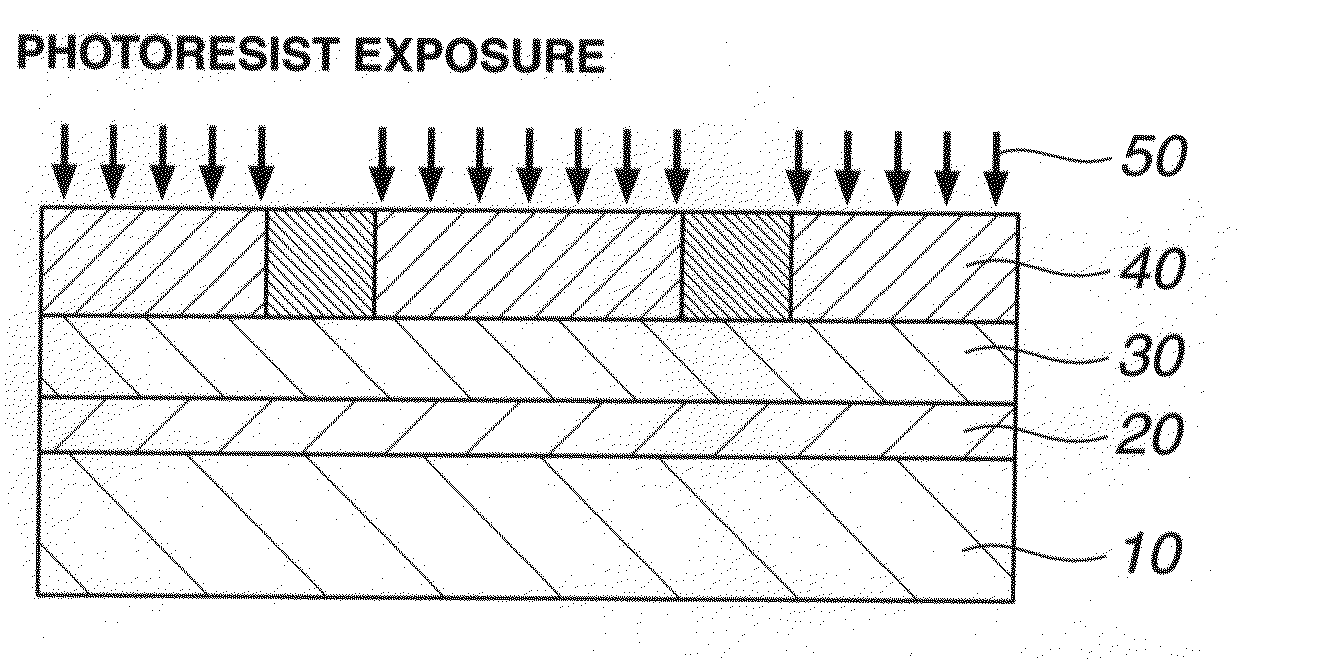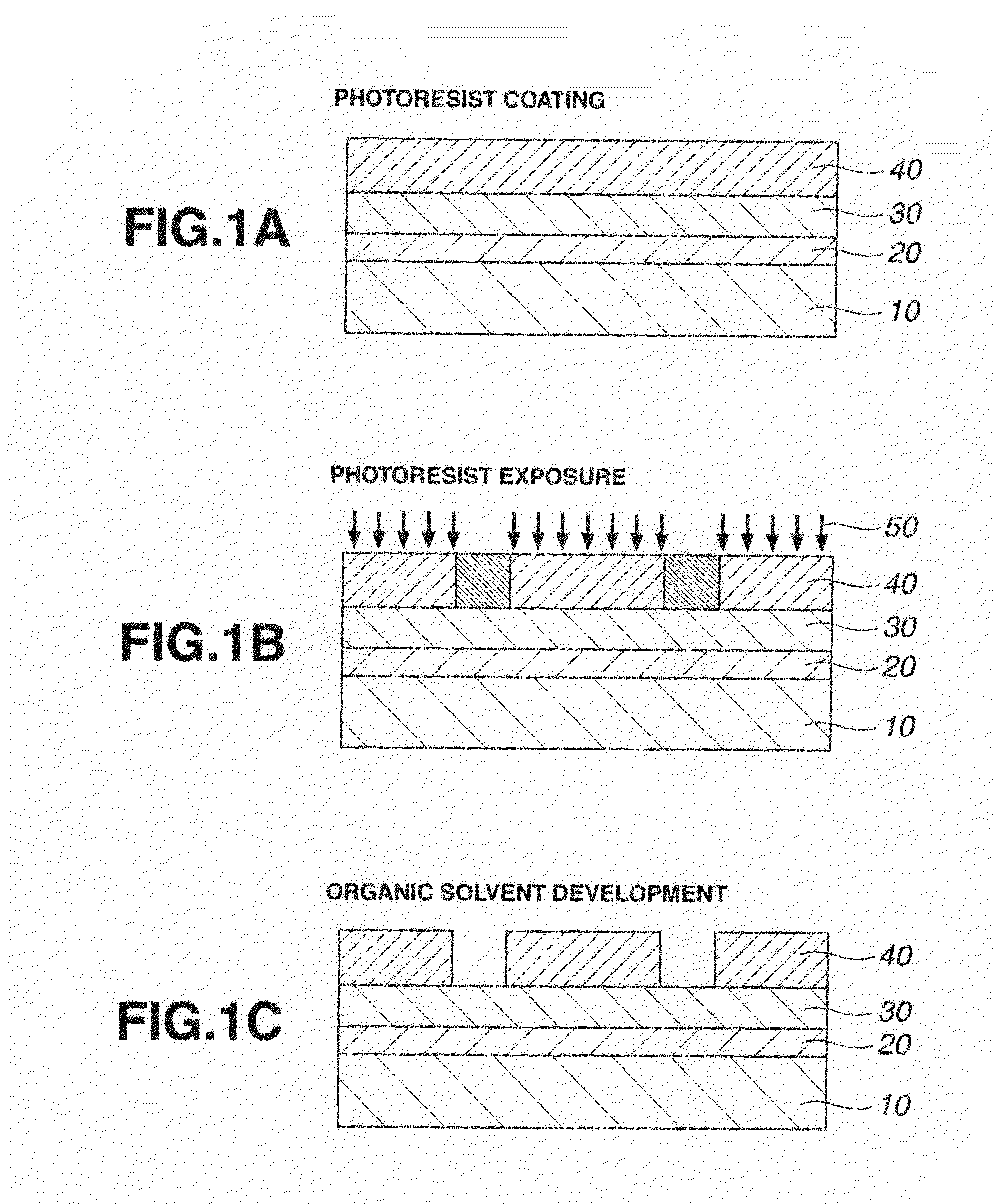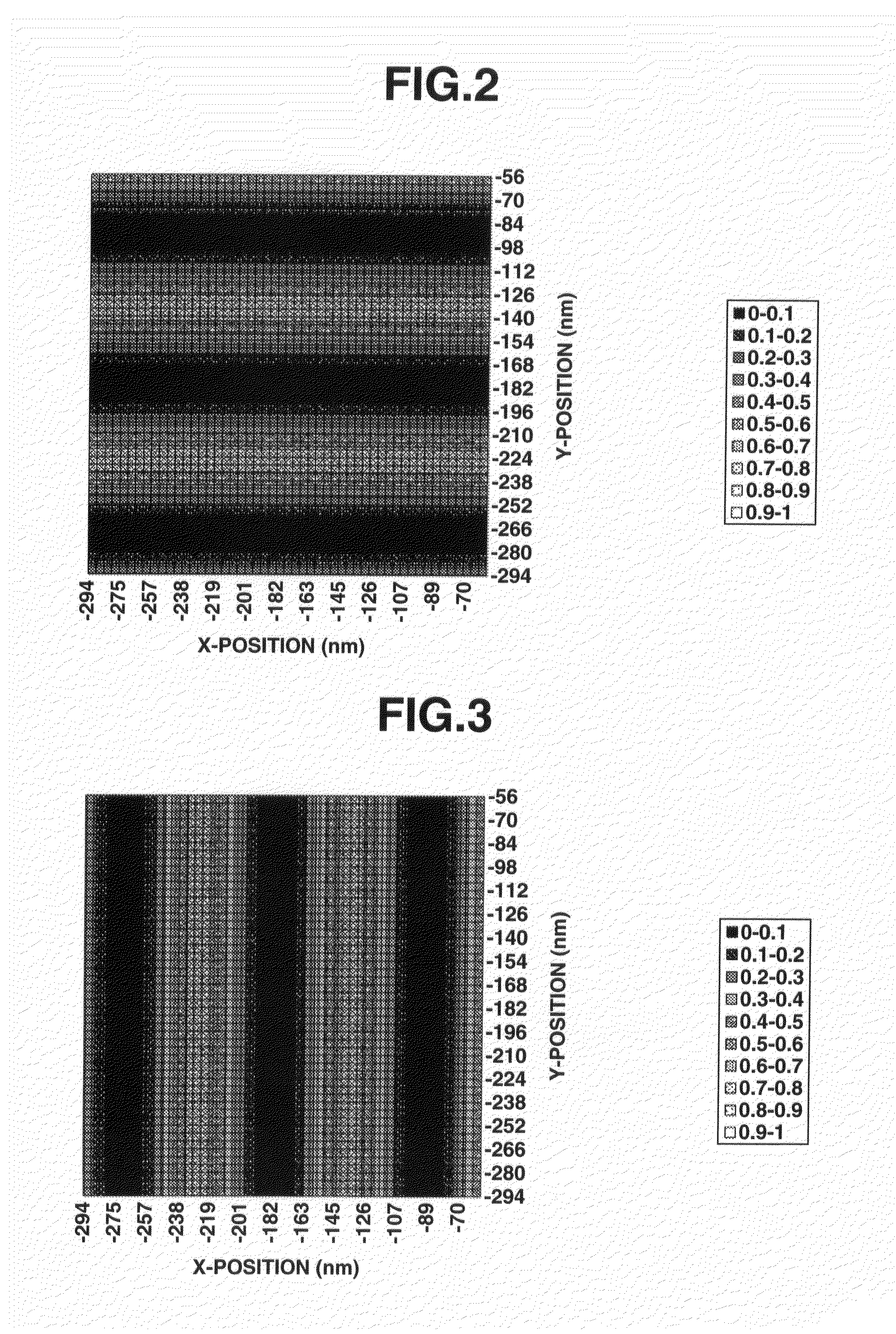Patterning process
a pattern and process technology, applied in the field of pattern forming process, can solve the problems of serious hole opening failure following negative development, and achieve the effects of improving dimensional uniformity, high dissolution contrast, and high precision of dimensional control
- Summary
- Abstract
- Description
- Claims
- Application Information
AI Technical Summary
Benefits of technology
Problems solved by technology
Method used
Image
Examples
example
[0153]Examples of the invention are given below by way of illustration and not by way of limitation. The abbreviation “pbw” is parts by weight. For all polymers, Mw and Mn are determined by GPC versus polystyrene standards. For pattern profile observation, a top-down scanning electron microscope (TDSEM) S-9380 (Hitachi Hitechnologies, Ltd.) was used.
synthesis examples
[0154]Polymers for use in resist compositions were prepared by combining monomers, effecting copolymerization reaction in tetrahydrofuran medium, precipitating in methanol, repeatedly washing with hexane, isolation, and drying. The resulting polymers (Resist Polymers 1 to 16 and Comparative Resist Polymers 1 to 3) had the composition shown below. The composition of the polymer was analyzed by 1H-NMR, and the Mw and Mw / Mn determined by GPC.
Preparation of Positive Resist Composition and Alkali-Soluble Protective Film-Forming Composition
[0155]A resist solution was prepared by dissolving polymers (Resist Polymer) and components in solvents in accordance with the formulation of Table 2. A protective film-forming solution was prepared by dissolving polymers (TC Polymer) and components in solvents in accordance with the formulation of Table 3. The solutions were filtered through a Teflon® filter with a pore size of 0.2 μm. The components in Tables 2 and 3 are identified below.
Acid generato...
PUM
| Property | Measurement | Unit |
|---|---|---|
| wavelength | aaaaa | aaaaa |
| size | aaaaa | aaaaa |
| size | aaaaa | aaaaa |
Abstract
Description
Claims
Application Information
 Login to View More
Login to View More - R&D
- Intellectual Property
- Life Sciences
- Materials
- Tech Scout
- Unparalleled Data Quality
- Higher Quality Content
- 60% Fewer Hallucinations
Browse by: Latest US Patents, China's latest patents, Technical Efficacy Thesaurus, Application Domain, Technology Topic, Popular Technical Reports.
© 2025 PatSnap. All rights reserved.Legal|Privacy policy|Modern Slavery Act Transparency Statement|Sitemap|About US| Contact US: help@patsnap.com



